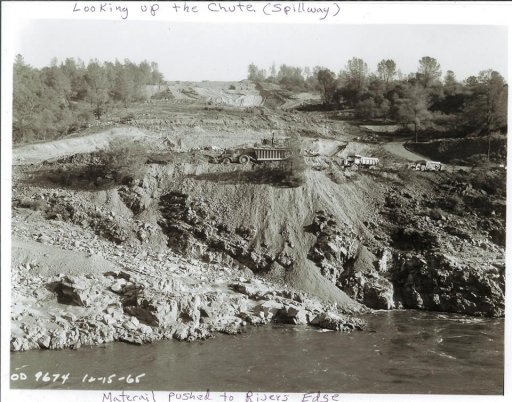Pozzolith
Member
The TerraServer site has a series of higher resolution images of the area:
https://www.terraserver.com/view?utf8=✓&search_text=39.53986, -121.49537&searchLat=39.53976&searchLng=-121.49537&lat=&lng=&bbox=¢er=
The patches/damage show up in a variety of photos
But of particular interest is this one labeled 2016-05-02
Appears to show some turbulence at the spot where the damage occurred.
This type of turbulence also occurs in one other spot near the bottom.
Like the hole area, this lower turbulence area also shows a quite large repair
This lower damaged area was still visible after the upper hole formed, and was visible during the first stoppage:

Some information about joints in concrete slabs from the Federal Highway Administration.
https://www.fhwa.dot.gov/pavement/t504030.cfm
Technical Advisory T 5040.30 Concrete Pavement Joints
The performance of concrete pavements depends to a large extent upon the satisfactory performance of the joints. Most jointed concrete pavement failures can be attributed to failures at the joint, as opposed to inadequate structural capacity. Distresses that may result from joint failure include faulting, pumping, spalling, corner breaks, blowups, and mid-panel cracking. Characteristics that contribute to satisfactory joint performance, such as adequate load transfer and proper concrete consolidation, have been identified through research and field experience. The incorporation of these characteristics into the design, construction, and maintenance of concrete pavements should result in joints capable of performing satisfactorily over the life of the pavement. Regardless of the joint sealant material used, periodic resealing will be required to ensure satisfactory joint performance throughout the life of the pavement. Satisfactory joint performance also depends on appropriate pavement design standards, quality construction materials, and good construction and maintenance procedures.











